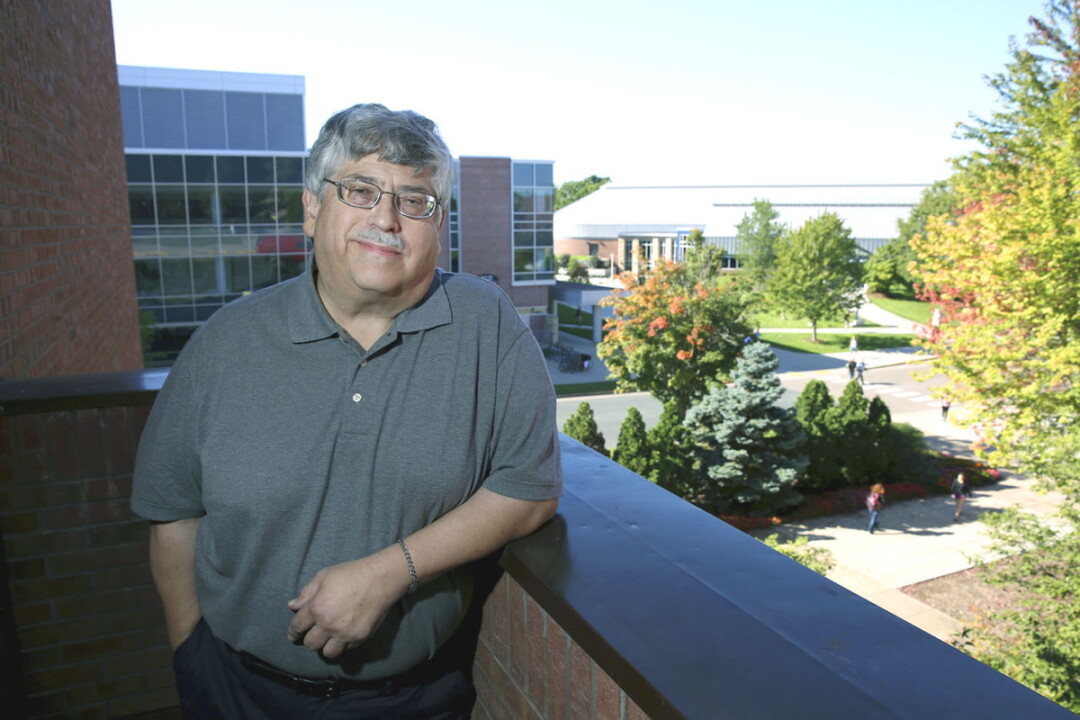Cinderella to Harry Potter
UW-Stout prof co-authors book on kids' fantasy lit

Children’s fantasy literature at first wasn’t for children at all. Stories such as “Robin Hood” and “Cinderella” were meant for adults but were gobbled up, eventually, by story-loving children.
When fantastical stories began to emerge in the 1800s with children in mind, many adults didn’t – and some still don’t – like the idea of outlandish, otherworldly, and frightening tales being absorbed by impressionable young minds. Even books such as L. Frank Baum’s beloved early 20th century The Wonderful Wizard of Oz occasionally have been banned. “Some evangelicals still believe (children’s fantasy literature is) satanic,” said Mike Levy, professor of English at UW-Stout.
Over the course of five centuries, however, the children have spoken. Children’s fantasy literature is here to stay. “Half of the best-selling books for children today are fantasies. Kids love to read this stuff. It’s enormously popular,” Levy said.
The history of children’s fantasy literature from the 17th century to the present, covering hundreds of important authors both famous and somewhat forgotten, is the subject of a new 274-page book, Children’s Fantasy Literature: An Introduction, by Levy and Farah Mendlesohn, an English professor and department chairwoman at Anglia Ruskin University in England. The book was published this spring by Cambridge University Press in England.
Although largely intended for an academic audience, Children’s Fantasy Literature isn’t overly academic. The subject matter is such, covering many beloved writers, that it has the power to pull along all readers who love children’s literature and are interested in how the fantasy genre developed.
With the Brothers Grimm, C.S. Lewis, Rudyard Kipling, E.B. White, J.R.R. Tolkien, Roald Dahl, J.K. Rowling, Neil Gaiman, and many others, it seems as if children’s fantasy literature must cover the whole of children’s literature, which leans toward the highly imaginative.
 Yet fantasy literature for children is a world of its own. Levy and Mendlesohn clearly chronicle the movement, from the Brothers Grimm’s 1800s Grimms’ Fairy Tales such as “Sleeping Beauty,” “Cinderella,” and “Snow White” to Lewis’ Chronicles of Narnia to Rowling’s Harry Potter blockbusters to Gaiman’s Newbery-award winning The Graveyard Book.
Yet fantasy literature for children is a world of its own. Levy and Mendlesohn clearly chronicle the movement, from the Brothers Grimm’s 1800s Grimms’ Fairy Tales such as “Sleeping Beauty,” “Cinderella,” and “Snow White” to Lewis’ Chronicles of Narnia to Rowling’s Harry Potter blockbusters to Gaiman’s Newbery-award winning The Graveyard Book.
Levy – who has taught a children’s literature course at UW-Stout for more than 30 years – and Mendlesohn trace the development of the genre in the English-speaking world. They write largely objectively, analyzing the importance of the works to the movement as opposed to making value judgments about them.
“Our book describes the entire sweep of children’s fantasy literature and puts it in a historical context so you can see how these stories reflect the ideas of their day,” Levy said.
Important children’s fantasy works are much more than creative stories, Levy said. They reflect the development of adults’ views of childhood, what it means to be a child and, as such, are a reflection of their times.
“They all have a deeper meaning. The Chronicles of Narnia books are about Christian values. The Harry Potter books are about the outsider and taking responsibility,” Levy said.
“Fantasy literature has a double value,” he added. “It allows you to talk about important things, and it’s just fun. It’s bibliotherapeutic.”
While the authors cover hundreds of children’s fantasy writers – picture books and poetry weren’t considered – and don’t dwell for more than a page or two on any of them, the depth of their knowledge is exhaustive.
Levy, who also researches and writes about science fiction in literature, has published three other books, is working on a fifth title and has published nearly two dozen scholarly articles, a book chapter, and more than 1,000 book reviews. He began teaching at UW-Stout in 1980.
Children’s Fantasy Literature is available through the publisher, www.cambridge.org, online at Amazon, and at Bookends on Main Street in Menomonie.


















